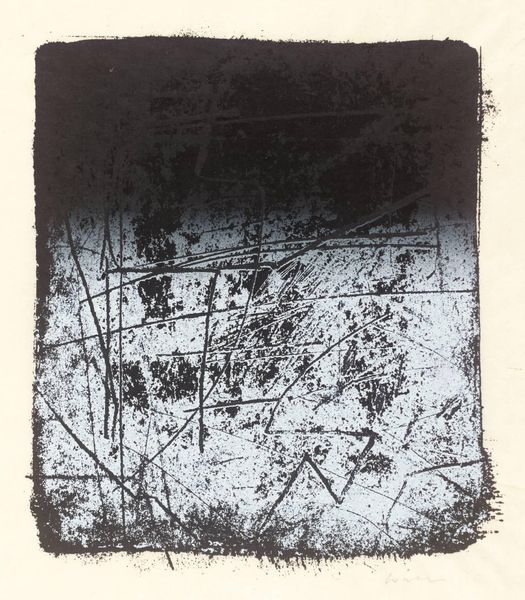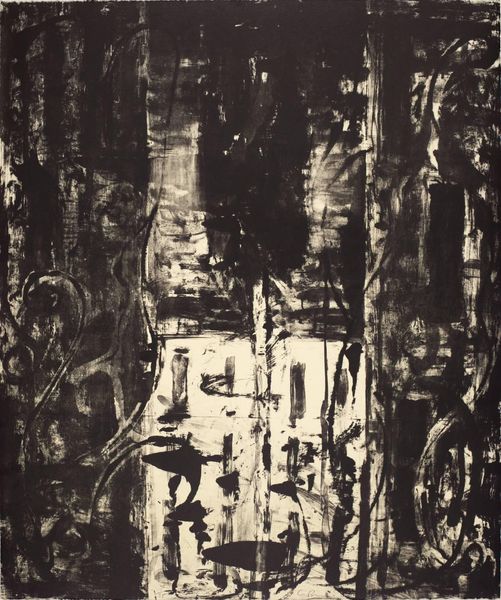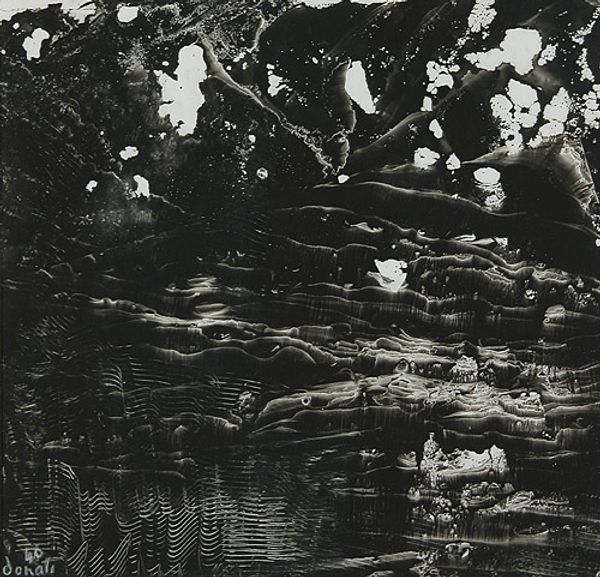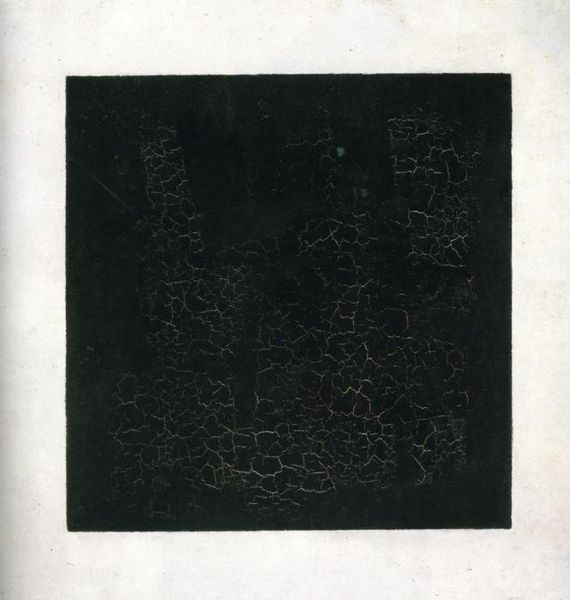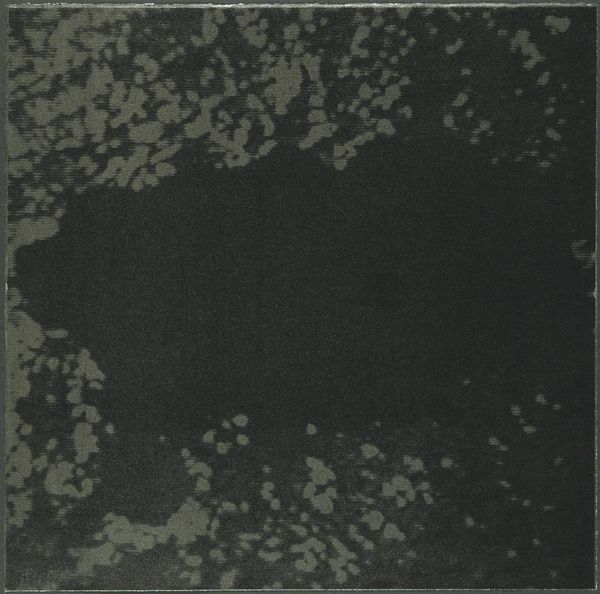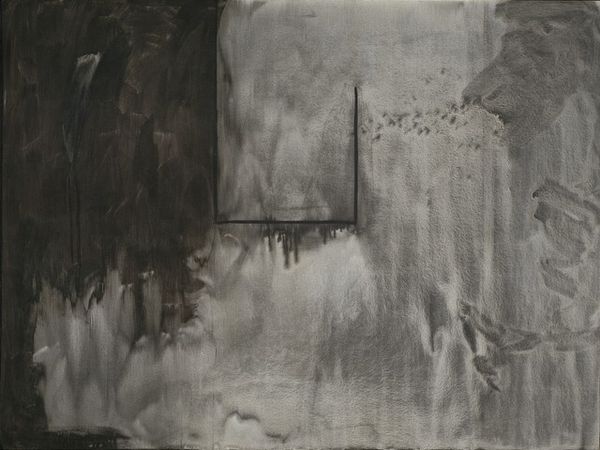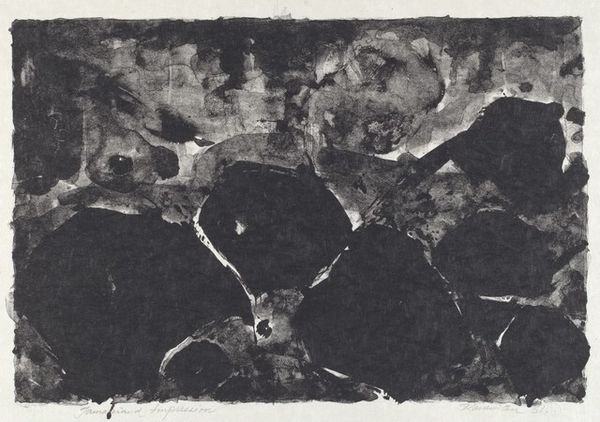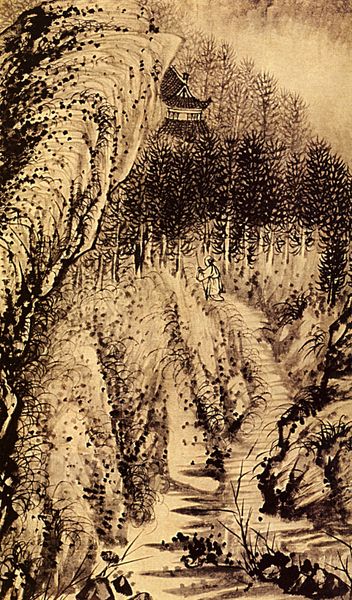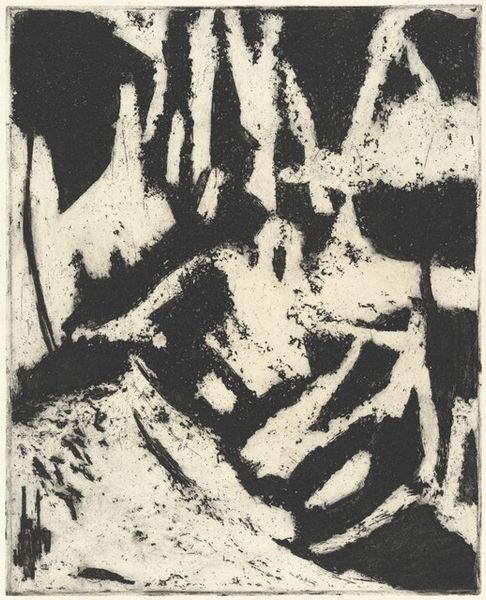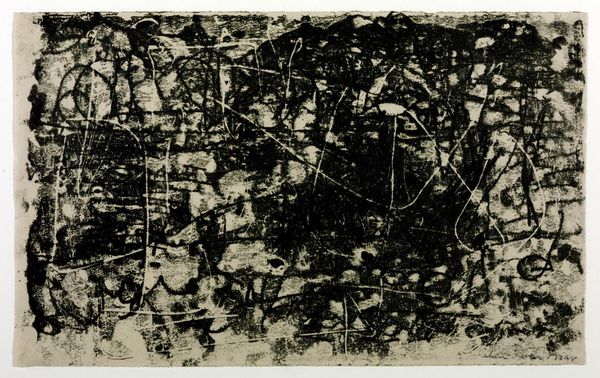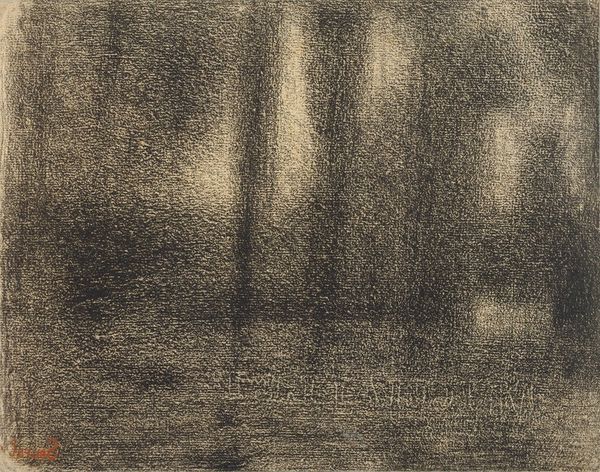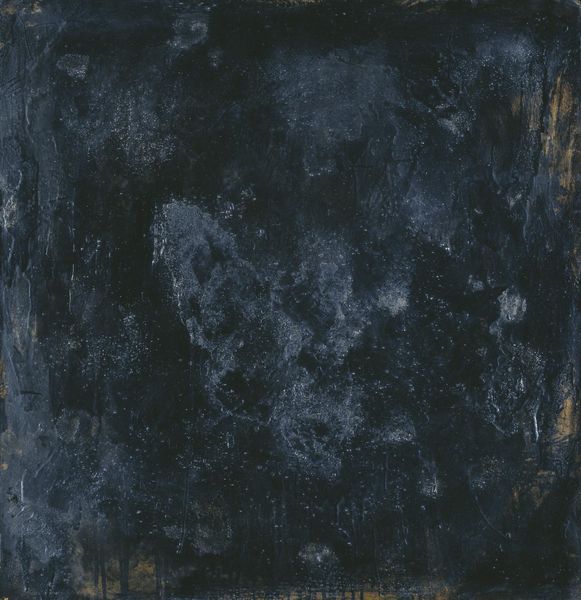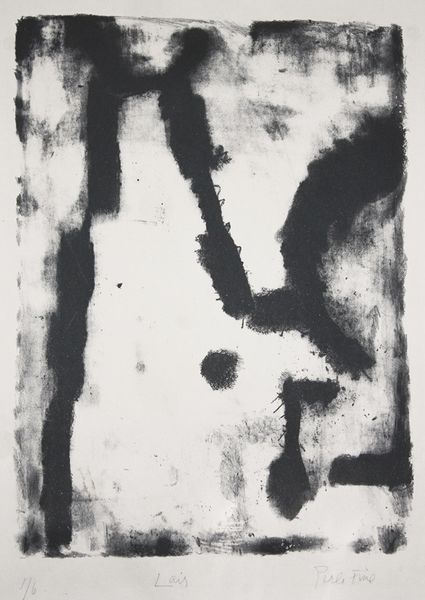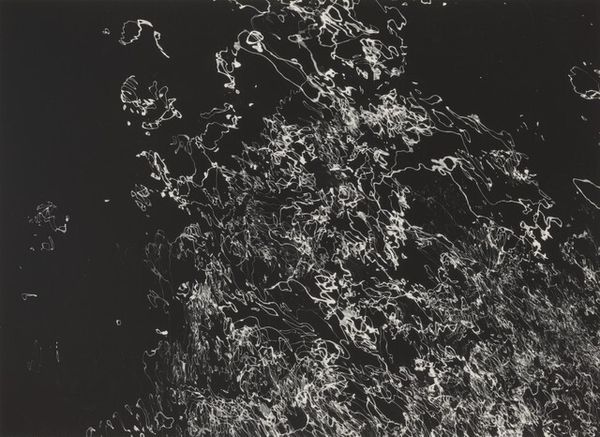
Dimensions: support: 3665 x 2667 x 25 mm
Copyright: © John Virtue | CC-BY-NC-ND 4.0 DEED, Photo: Tate
Curator: John Virtue's "Landscape No 624," held in the Tate Collection, presents a stark composition in monochrome. Editor: My first thought is… a storm. It feels like standing in the teeth of a gale, everything reduced to black and white, all details obliterated. Curator: Indeed. Virtue's landscapes often grapple with the sublime, evoking nature's overwhelming power. The lack of color underscores the raw, elemental forces at play, reflecting a world stripped bare by environmental or sociopolitical pressures. Editor: There’s a beauty in that rawness, though, isn't there? Like a charcoal drawing capturing the essence of a place, even if that place is harsh and unforgiving. Curator: Exactly. Virtue invites us to consider landscapes not as passive backdrops, but as active participants in our collective narrative, urging a deeper, more critical engagement with our surroundings. Editor: I keep coming back to that storm, though. Maybe it's a storm inside us, too, reflected in the world around us. Food for thought!
Comments
tate 6 months ago
⋮
http://www.tate.org.uk/art/artworks/virtue-landscape-no-624-t07915
Join the conversation
Join millions of artists and users on Artera today and experience the ultimate creative platform.
tate 6 months ago
⋮
This large painting consists of four abutting square panels making up a single image with black ink and emulsion worked in dense layers across the canvas. The painting oscillates between gestural abstraction and the representation of a landscape. It immediately recalls Abstract Expressionist works such as Franz Kline’s Meryon, 1960-1 (Tate T00926), a large scale painting with black brushstrokes on a white ground. Landscape No 624 is one of a series of paintings inspired by John Virtue’s walks along Exeter canal near the River Exe. Virtue’s work has always been informed by his local landscape. After moving to Exeter in 1997, he began taking walks every Thursday from the southern outskirts of the town towards the estuary and the sea. On these walks he made numerous sketches which formed the basis of this and other paintings, made back in his studio. The image reflects his memory of walks along the overgrown canal towpath, with dense foliage blocking the light. To the right of the picture overhanging branches are reflected in the canal’s surface. The image is difficult to read, but as with all the works in the series, a clearly discernable view of the spire of All Saints Church in Exmouth prevents the image from becoming purely abstract. The church tower, on the far right, anchors the painting in observed reality.
